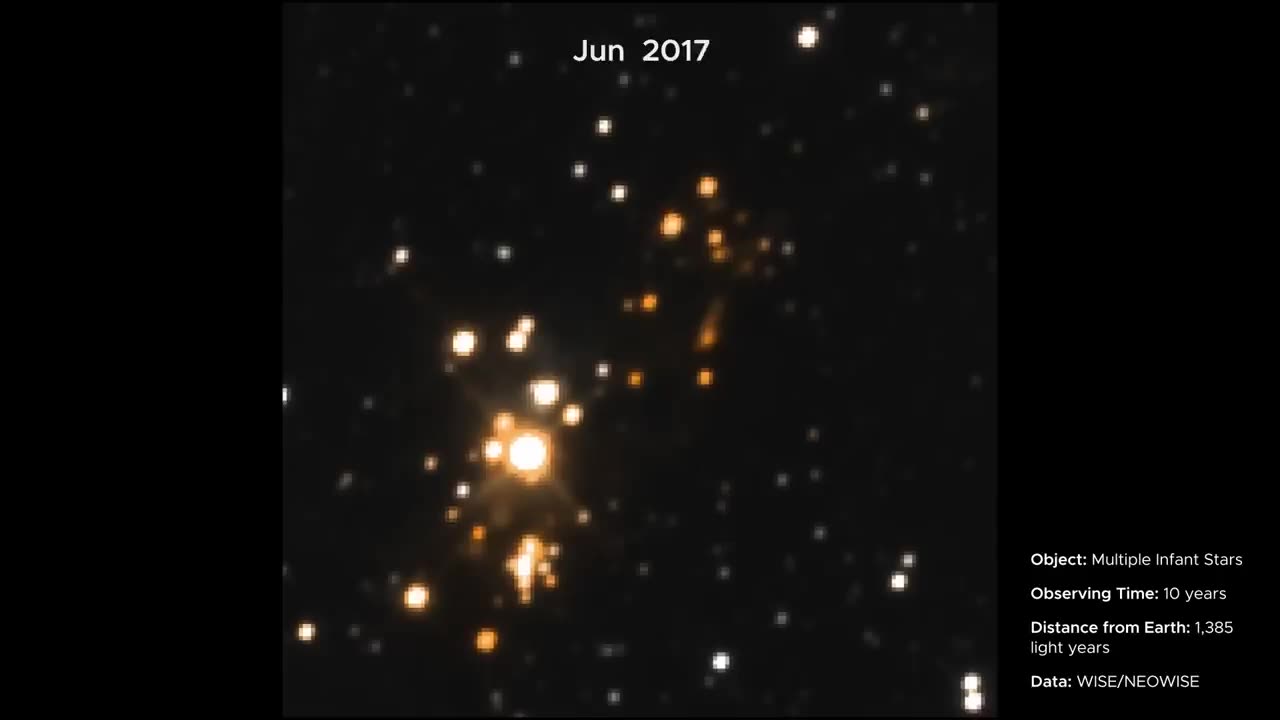Premium Only Content

NEOWISE_ Revealing Changes in the Universe
.The universe is a dynamic and ever-changing place, with a wide range of processes and phenomena occurring on various scales. Here are some of the notable changes and events that occur in the universe:
Stellar Evolution: Stars go through various stages of evolution, starting from their formation in stellar nurseries, followed by nuclear fusion in their cores, and eventually leading to processes like supernovae, which mark the explosive end of massive stars.
Galactic Collisions and Mergers: Galaxies can collide and merge over billions of years, leading to the formation of new galaxies and the transformation of existing ones. These interactions can trigger star formation and influence the distribution of matter.
Black Hole Dynamics: Black holes, formed from the remnants of massive stars, can grow in size by accreting matter from their surroundings. Their gravitational effects can shape the surrounding space and influence nearby objects.
Cosmic Expansion: The universe itself is expanding, causing galaxies to move away from each other. This expansion was initially discovered through the observation of redshifted light from distant galaxies.
Dark Energy and Dark Matter: The presence of dark energy, a mysterious force driving the accelerated expansion of the universe, and dark matter, an invisible form of matter that interacts only through gravity, are significant drivers of cosmic change and evolution.
Supernovae and Stellar Explosions: Supernovae are powerful explosions that occur when massive stars reach the end of their lives. They release tremendous energy and play a crucial role in distributing heavy elements throughout the cosmos.
Cosmic Microwave Background Radiation: This is the afterglow of the Big Bang and provides valuable insights into the early universe's conditions and evolution.
Formation of Planets and Solar Systems: Planets and solar systems form from rotating clouds of gas and dust around young stars. These processes involve the coalescence of particles and the accretion of material.
Gamma-Ray Bursts: These intense bursts of gamma-ray radiation are associated with energetic astrophysical events, such as the collapse of massive stars or the collision of neutron stars.
-
 1:12:40
1:12:40
Wendy Bell Radio
11 hours agoPet Talk With The Pet Doc
48K30 -
 LIVE
LIVE
Biscotti-B23
28 minutes ago🔴 LIVE TOURNAMENT PRACTICE ⚔ TOP 100 RANK 👑 DEMON SLAYER HINOKAMI CHRONICLES 2
25 watching -
 LIVE
LIVE
FusedAegisTV
15 hours agoStreet Fighter 6 FINALS, CS2 Semifinals | $1,250,000 | Riyadh, Saudi Arabia EWC 2025 !estv
141 watching -
 40:42
40:42
SouthernbelleReacts
1 day ago $0.10 earned😂 American Pie (1999) Reaction | Iconic Teen Comedy, High School Chaos & 90s Nostalgia 🥧
28.7K4 -
 5:05:02
5:05:02
LumpyPotatoX2
6 hours agoBecome a HellDiver Today - #RumbleGaming
40.5K1 -
 4:52:02
4:52:02
Midnight In The Mountains
8 hours agoGaming w/ PER·SE·VER·ANCE | Sassy Saturday Fortnite | with the Midnights!
29.7K3 -
 LIVE
LIVE
shyboyking
6 hours agoThe Bots Of The Bots !!!😎
135 watching -
 24:06
24:06
True Crime | Unsolved Cases | Mysterious Stories
5 days ago $0.27 earnedShe Traveled Alone… and Never Came Back – 5 Mysterious Unsolved Cases (Part 6)
33.2K6 -
 27:23
27:23
Clickbait Wasteland
19 hours ago $0.09 earnedAsking New Yorkers Who They Support For Mayor: Staten Island
32.5K20 -
 16:58
16:58
World2Briggs
1 day ago $0.07 earnedThe California Rant: Point Blank With No Fluff or BS. California Gold?
20.6K4